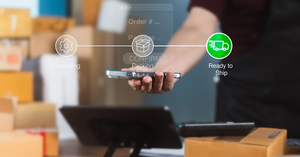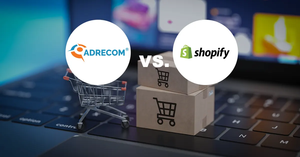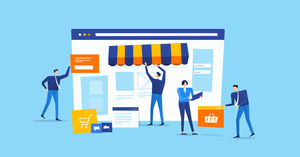
So you finally got promoted within your family owned business to take on the reigns of bringing your company's online web presence into the 21st century. If your company's experience is similar to many other businesses in its space - especially the manufacturing space - the odds are reasonable that you are sitting on what we call a "me too" website - just enough to complement your brand and logo and give people a way to connect with you but not much more. Considering our more than a decade of experience in managing companies' online web presence, the following is a summary of our step-by-step guide to designing a new high functioning b2b ecommerce site and moving beyond a simplistic brochure ware type of website. Read on as we dissect the challenge and give you some simple steps to look like a hero in a short amount of time.
The first step in our b2b website design guide is to know your audience. Once you figure out who you are targeting with your website content (that includes textual content pages and digital media like photos, videos, PDf's and PowerPoint) the core principles of our guide will flow very easily. And, as you take steps to segment your target audience keep the following syllogism in mind for pretty much any page on your website: You need to let visitors know (1) what you do, (2) who you do it for and (3) why you are the best at what you do. If your website resolves these three business needs of most of your prospective customers you will beat your competitors every single day of the year. Let's get started.
Ask yourself this question: what do you do? What service do you provide? What products do you offer? As you start making a list of answers to this question you will essentially be building a tangible list of keyword phrases that your prospective customers would be typing into Google as they look to find a company like yours which has a solution to their immediate or long-range need. So if you sell security badges then start creating a list of alternate ways a person would look for a company that sells security badges. If you manufacture gourmet cookies for the local Los Angeles market, then you probably want to have the different flavors of cookies that are available and how they can purchased. So write this list down. This becomes your keyword list that describes your services. And because we believe in doing two or more things with one effort, this keyword list also becomes the basis of your search engine optimization campaign. (See what this means). Once you have our keyword phrase list, cull it down to the core essentials, make sure it speaks to your target audience and simply add this list into a drop down menu in your nav bar called something like Products or Services. On your home page you may also consider highlighting some of your top services in a visually compelling rotating banner or a call-out box to catch attention. See examples below.
Once you have engaged a visitor and caught their attention to let them know you have a service that meets their needs, your next objective is to convince them you are experienced in THEIR field. You have to show industry expertise. We call this "who you specialize in helping" or simply the WHO factor. If your website content can convince the visitor that you have domain expertise in their industry, then it separates you from even an Amazon type of "we supply it all company" because now you differentiated yourself and it looks like you can do a better job than Amazon because of your focused experience.
Part of this second objective is to also think about the person on your site. They might need cookies but think about what role that person fills in their company. Are they buying cookies for holiday gifts for employees or maybe gifts for valued clients. Or maybe it is a facilities manager who needs to find cookies for their company dining room. Is your usual customer the Facilities Manager, the CFO or the VP Sales? Try to personalize your approach to speak to the shoes that person is filling in his/her own company so you can simply "connect" with their personal situation. So if your site content focuses on facilities managers and speaks their language you again separate your company from other companies because you are showing a personal attention and experience. We emphasize the usage of multiple landing pages in your site where the messaging is focused to each target persona in your demographic profiles database.
OK. So you have the visitor inside your sales funnel and yet the phone still isn't ringing. Don't despair. The final conversion obstacle is well within your reach. This is what we call the "Why you" factor. Just because you have the service required and even have industry experience, there are likely other competitors who have the same what/who combination of reasons to convince your prospective customers to work with them too. So here is where you need to get some trust rabbits and start pulling them out of your magic hat. This stage of the sales funnel is where you must convince people that you are the best choice from the list of companies they are interviewing. Your approach can be subtle (like a toll-free vanity phone line) or it can be more direct like video testimonials from name brand customers.
So considering that this article is not meant to be a thesis but really a broad overview of guiding principles we apply when creating a new web presence for our manufacturing and b2b clients, let's reassemble the above into something more easily digestible for your review. The first rule is to know your audience demographics. Understand their pain points and what you can do as a company to lessen their pain. Then build your website content (that means what you write and what you visually display like images and videos and photos) around the What/Who/Why framework so you can drive visitors into your sales funnel and get your phone to ring. Start with your top navigation bar. Make sure the menu choices in the nav bar meet the needs of answering the What/Who/Why formula. Use drop downs as well in your nav bar to save space without sacrificing the opportunity to share easily reachable information. Then personalize your content with industry and persona focused landing pages. Then and most importantly, though it hasn't been mentioned yet, make sure you have the appropriate and easily identifiable calls to action to enable prospective customers to connect with you. So get your phone number on the top right where people expect it to be. And if you have a contact form, put in your social media endorsements there. It will encourage people to fill out the form more often since they see you have been endorsed by others.




